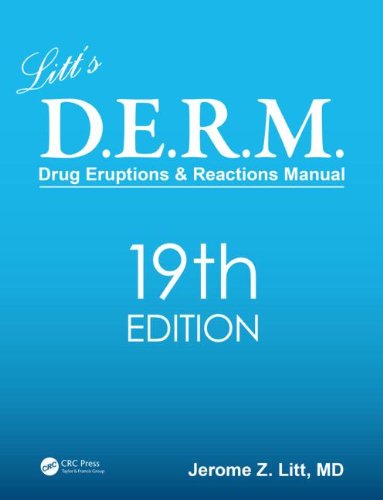

Most ebook files are in PDF format, so you can easily read them using various software such as Foxit Reader or directly on the Google Chrome browser.
Some ebook files are released by publishers in other formats such as .awz, .mobi, .epub, .fb2, etc. You may need to install specific software to read these formats on mobile/PC, such as Calibre.
Please read the tutorial at this link. https://ebooknice.com/page/post?id=faq
We offer FREE conversion to the popular formats you request; however, this may take some time. Therefore, right after payment, please email us, and we will try to provide the service as quickly as possible.
For some exceptional file formats or broken links (if any), please refrain from opening any disputes. Instead, email us first, and we will try to assist within a maximum of 6 hours.
EbookNice Team

Status:
Available0.0
0 reviewsNearly two decades after the first Drug Eruptions & Reactions Manual was compiled by Dr. Litt, this classic work has been developed and expanded into Litt’s D.E.R.M. Relied upon by dermatologists and medical practitioners internationally for its unparalleled practical focus on adverse effects and cutaneous reactions, this text is the essential quick-reference tool for patient care and drug safety.
While a comprehensive picture is available via a subscription to the online database, the manual presents the most important information for quick clinical reference – the trade names, half-life, known interactions with other drugs, the pregnancy category into which the drug falls as well as the categories of reactions and the incidence and number of reactions reported for each. The manual also offers a short description of the most common eruption patterns, lists of the drugs that cause important reactions, and a concordance of synonyms, generic names, and trade names. Although the manual has grown from a basis in dermatology, all widely used drugs are included and all types of reaction beyond those found in the skin, hair, and nails are recorded.
New this year is a groundbreaking section on class reactions: ten major classes of widely used drugs (including ACE inhibitors, statins, and tricyclic antidepressants). These are presented in tabular form, showing at a glance which reactions are known to occur in all members of the class and at which levels, which occur in a majority, and which occur at significant levels for even a few members.
No clinical practitioner can afford to be without this invaluable tool to help predict, diagnose, and resolve problems arising from prescribed drugs. Ideally practitioners should avial themselves of both the database and the manual, for their different purposes.